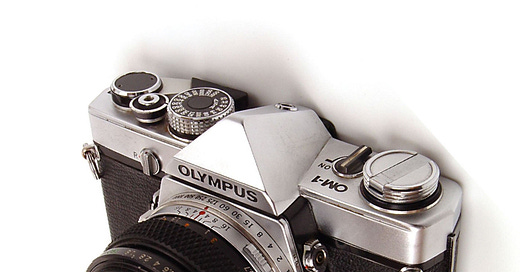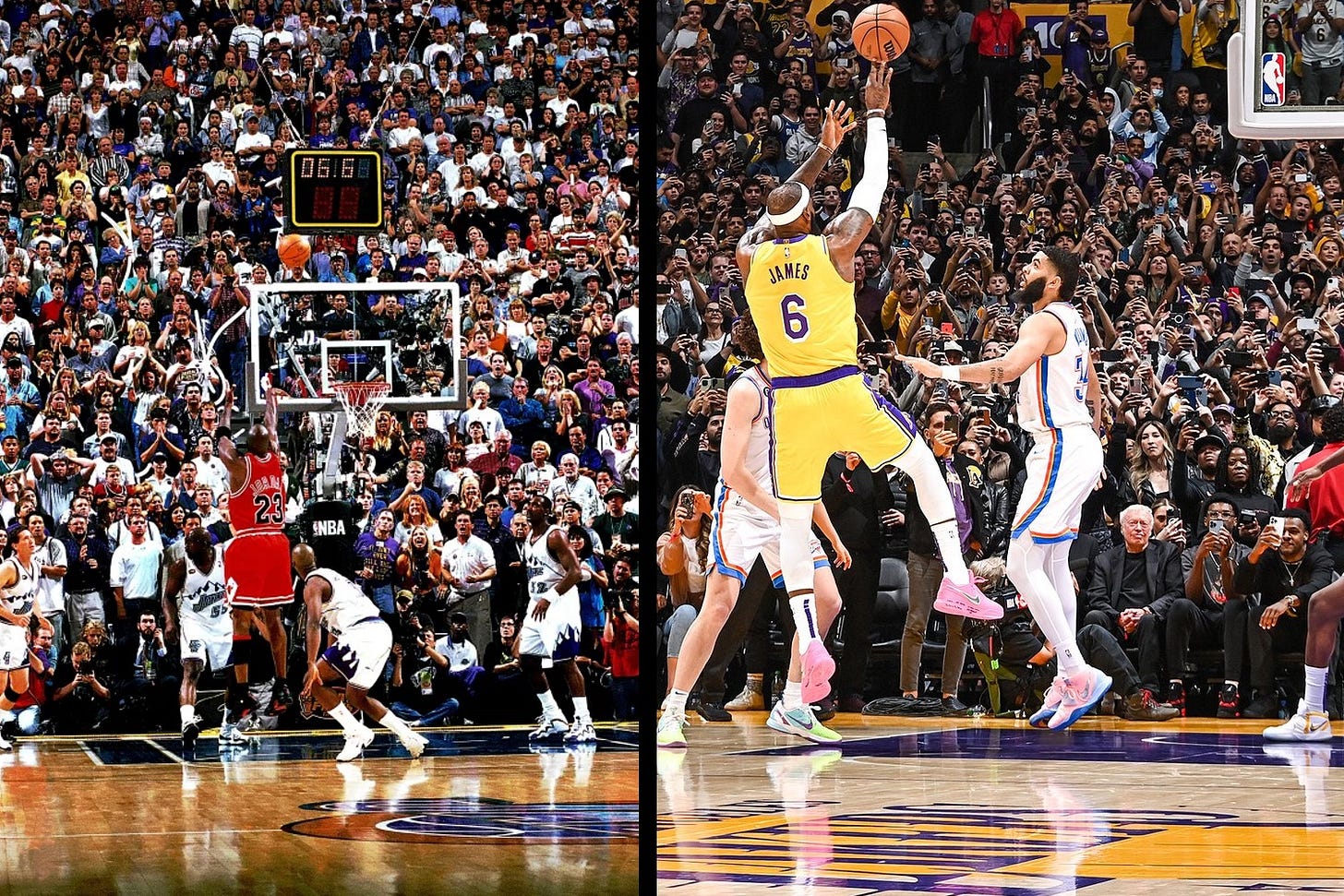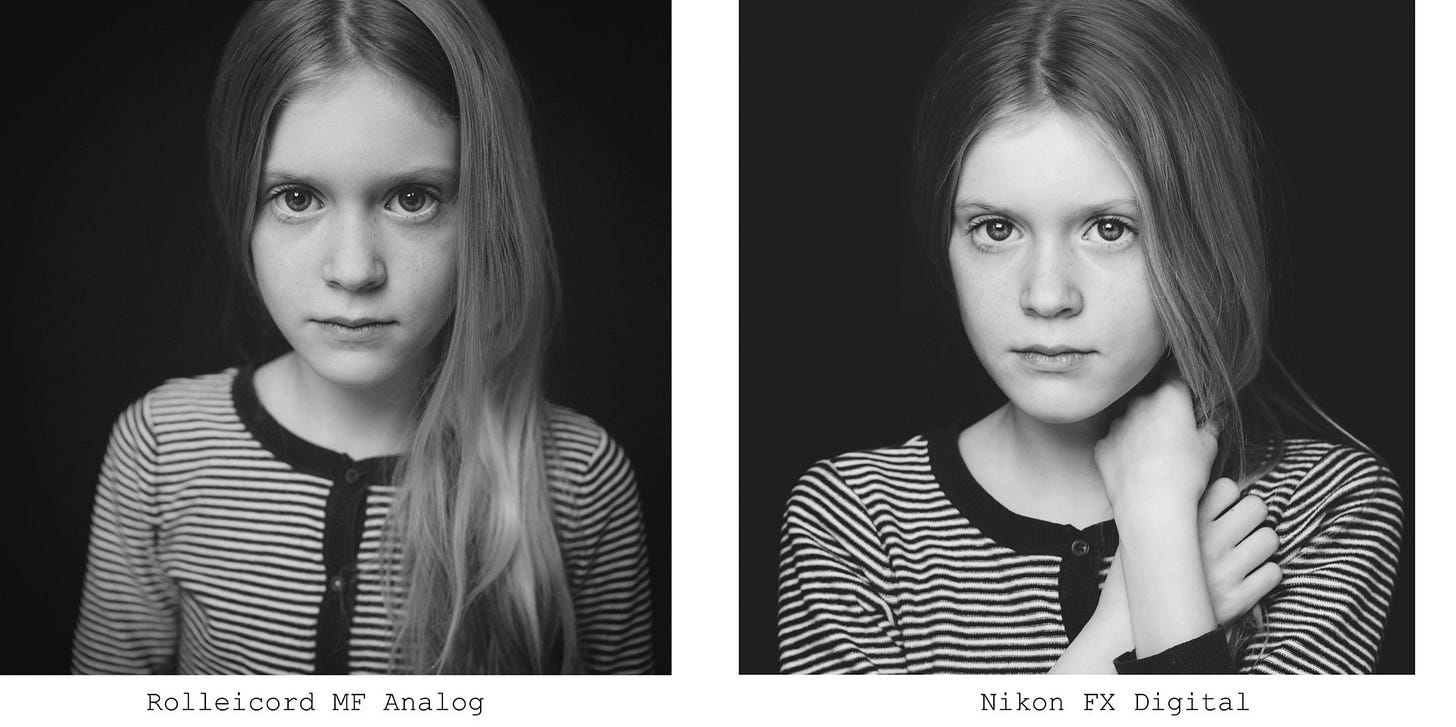After a good bit of research I recently bought a 35mm camera. I have been wanting to get into what is now affectionately known as “analog photography” for a while and finally pulled the trigger, so to speak. I think film photography is aesthetically superior to digital: I think it generally tends to look better than digital, for one—its colors more normal and more human, its qualities richer and fuller, the photos more alive and interesting where digital tends to look just both flat and overdone at the same time. Digital photography captures too much detail, and it does it too cleanly, usually leaving the photos looking like Disney CGI instead of real pictures. It’s unpleasant.
I honestly think most people feel the same way, even if they’re unaware of it. Digital photography has become so ubiquitous that it’s easy to not remember that there was ever anything else. Above all, the smartphone camera has become the dominant method by which people capture images. For probably 99% of people today, if they’re taking a picture, it’s on a smartphone. It’s probably not necessary for me to restate my hatred of the smartphone here but rest assured that that vitriol addresses the cameras on those phones as well.
Here are the problems with digital and/or phone photography and why it’s inferior to traditional film:
We do it all the time. Phone cameras are incredibly easy to use; that’s the way they’re designed. You pull the phone out of your pocket, slide your thumb, and you’ve got a 48mp camera in your hand, not to mention a video camera and a built-in panoramic device as well. It’s a marvel of engineering and high technology. The upshot is we’re just always doing that. We’re always taking pictures with our phones. Anytime something interesting happens people are looking at it through their phones. The next time something interesting happens, look around you; I bet you can peg at least 70% of anyone in the area looking at the incident not with their eyes but with their stupid phones.
Here’s a great example: Consider the following two photos, one of Michael Jordan taking the game winning shot in Game 6 of the 1998 NBA Finals and one of LeBron James earlier this year taking the shot that made him the all-time highest-scoring player in NBA history:
Notice in the 1998 photo everyone is just completely fixated on the game, the action, the high drama, the incredible historical moment, the breathless instant in which history is being made. In the more recent photo, meanwhile, everyone is looking at the event on their “mobile device.” Another historical shot and nobody can be bothered to actually really watch it. Even the people who are actually watching the shot while recording it are still only half-fixated on it, the other half making sure they’re actually getting the image. This is, of course, incredibly lame, just really lame behavior. Something incredible is happening and you’re watching it through a little computer? Lame. And it’s facilitated entirely by the fact that we have highly cheap, ultra-accessible cameras in our pockets that we think we need to use at every single interesting thing when it arises. Multiple generations of people now believe this is pretty much the only way to interact with momentous occasions when they happen: Boom, whip out your phone.
Needless to say, a 35mm camera—even a mid-shelf, idiot-proof, auto-fed and auto-focusing one—is markedly harder to access and utilize; it creates a barrier to constant usage, forcing you to deploy it only in certain instances when the payoff is much higher. You’re not always looking through the camera; you’re only utilizing it in limited circumstances, and you’re thus curating a much more carefully vetted, higher-quality photo collection—while at the same time spending more time actually watching interesting things happen rather than gazing at them through a smartphone.
I suppose you could argue that the relative rarity of film photography means that only a few photos of special events (like those above) actually get captured; now, with cameras on every phone, we can have thousands of photographs of the same events. Which, I mean, really? Do you really need thousands of photos of the same exact thing? Of course you don’t! This doesn’t make our lives any better. Do you really think your life has markedly improved because you have a photo on your phone that 12,000 other people also took at the exact same time? Don’t be silly.We don’t actually use or appreciate these photos. All of this unpleasant pathological behavior might be offset, at least in part, if we actually truly enjoyed the thousands of photos we regularly take every year now, at least in the way we used to enjoy photos. But we don’t! Do you know anyone who truly looks at photos in much detail anymore? I don’t. Looking at one’s photo collection these days—a photo collection which 9.9 times out of 10 will be on one’s phone and which regularly numbers in the high thousands—has become an exercise in quickly swiping through dozens of pictures, settling on one for a brief moment, swiping again, pulling back and rapidly scanning through several months of photos, finding one and then swiping through again, and again, and again. Nobody really lingers on these photos to any great length at all. The careful, memorable stints of reflection and remembrance that used to accompany looking at photos—sitting down with an album, carefully turning the pages, looking at and maybe touching each photo behind the mylar, or even patiently shuffling through a stack of 4x6s from your family photo box—are essentially nonexistent today. It’s all just rapid swiping.
Sharing your photos with someone has likewise become an exercise in hurried impatience. Whereas before you might have sat down on a couch with someone and looked at an album together, or else passed photos back and forth from a stack while discussing each shot and each memory, now you might pull up a photo on your phone and hand it to your friend; they might look at it for a second and then hand it back; maybe you hurriedly pull up another few photos for them to see and they swipe through those quickly. That’s it. Photos used to invite a sort of pleasant communion with whomever you were sharing them. Now, as with everything else involving phones, it’s just quick, one-and-done, not gratifying, not memorable.
You could argue that there is some limited utility in using your camera phone to share brief photographic captures with family and friends who might otherwise go weeks or months without seeing you, your children, other special people, etc. Maybe this is true. But honestly I don’t think the benefits outweigh the downsides by even a fraction. Yes, it’s kind of nice to get a snapshot of your nieces and nephews, or a pretty main street in a vacation town, etc. It can be fun to illustrate your text messages with a little photographic accompaniment. The upshot seems to be that everyone is constantly taking photos with their phones, always whipping them out, rarely viewing interesting things any way other than through a lens designed by Apple Inc or Android or whatever.
If we could find a way to do the former without always doing the latter, there might be a case to be made here. As it stands, people are just always using their phone cameras—with the end result that we are awash in thousands and thousands of photos, a small fraction of which we ever even glance at. All that wasted time and we barely even reap any rewards from it.Film is just better than digital. It just really is. As I noted, digital makes everything look too perfect. It is a medium that is radically divorced from the normal modes of human visual perception. Everything is too crisp, too perfect, too delineated; digital somehow renders reality about 85% more italicized, so that there’s no escaping into the soothing, interesting blended variances of what we actually see with our eyes every day. Yet at the same time it makes everything look somehow stale and flat, lifeless and oddly fake. It’s the photographic equivalent of a Twinkie: On the one hand it’s sort of this marvel of marketing/engineering, and on the other hand it is entirely counterfeit and eerily unreal.
Here’s a fine comparison I found on the Internet:I think it is pretty obvious which is the superior photograph here, at least if we are to assume that photography—or at least portraiture—is supposed to evoke feelings of familiarity, warmth, recognizance and interest in the humans who view it. The photo of the young lady on the left is a noticeably more human depiction than that on the right; the former looks like a little girl, while the latter looks like an AI-commissioned portrait of a little girl, all distinctions erased, all subtleties buried under several dozen megapixels of too-fine focus. The latter is not how we see the world; the former is. If photography is supposed to capture the way the world is, to remind us of these things and keep us centered on the people and places in our lives, then digital fails at doing so, and film seems plainly more well-suited to the task.
The downsides, of course, are that film is considerably more expensive, riskier and slower than digital. Then again, so what? Why have we decided we need to constantly see every photo we take, immediately, directly after we take it? Why is that such an inarguable requirement of photography these days? Get good at taking photos with a camera and you can very reliably take good shots every time you whip it out. Go to your parents’ and grandparents’ houses: Their bookcases will likely be full of photo albums of really good photos that someone in your family tree figured out how to take. This is not a hard skill to learn. And yes, it costs more. Better things almost always do! Spend extra money on high-quality photo materials and you can fill your house with photos you will look at and treasure for years and years instead of filling your phone with thousands of photos that you just endlessly transfer to phone after phone.
Maybe there’s no going back. Who knows. But I bet if you get yourself even a cheap 35mm camera and start taking some shots with it, and get them developed, and go through them when you get them back, you may rediscover some of the joy that once made it so special and so worth doing. Give it a shot, no pun intended. You may find out how much you like it in the process. Okay, pun intended that time.






It's not the same photograph. That complicates comparing the two.